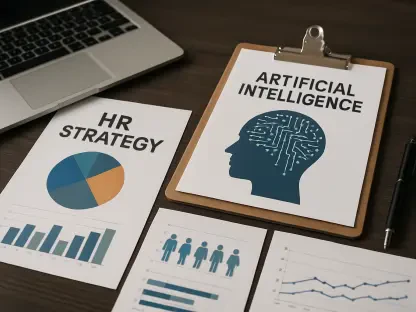Imagine a bustling office space, every desk occupied, phones ringing, and team members collaborating in person. Now picture the same workflow with employees spread across various locations, connected digitally through advanced technologies. This evolving work environment raises a crucial question: How will AI and cloud tech shape the future of hybrid work?
The Evolution of Work Environments
As companies adjust to the complexities of the modern workplace, the question of future work environments becomes even more relevant. How can businesses prepare for an office dynamic that might never fully return to its pre-pandemic state? The transformation of traditional workspaces into hybrid models showcases this change.
Understanding the Why: The Need for Hybrid Work
The COVID-19 pandemic forced a rapid reassessment of traditional work models, pushing many organizations to adopt remote work as a temporary solution. However, this shift unveiled significant benefits, such as improved work-life balance and greater flexibility, leading to a more permanent embrace of hybrid work. The appeal of hybrid models lies in their ability to offer flexibility, catering to diverse employee needs and preferences while maintaining productivity.
The Role of AI in Hybrid Work
Artificial Intelligence is pivotal in the hybrid work model by automating repetitive tasks and enhancing operational efficiency. For instance, intelligent chatbots can manage routine customer inquiries, freeing employees to focus on more complex tasks. Predictive analytics enables managers to anticipate employee needs and optimize resources, while AI-driven tools can identify potential burnout and improve workplace safety by monitoring and analyzing data trends proactively.
Cloud Technology as the Backbone of Hybrid Work
Cloud technology supports hybrid work by providing a robust and flexible infrastructure. It enables real-time collaboration, secure data sharing, and scalable IT resources, allowing employees to access everything they need from any location. Companies like Microsoft and Google have successfully leveraged cloud platforms to manage remote workforces, demonstrating the effectiveness of these solutions in maintaining seamless operations.
Bridging Physical and Digital Workspaces
Integrating in-person and remote work experiences is essential for hybrid work success. Tools like AI-generated video conferencing summaries help streamline meetings, while virtual whiteboards facilitate brainstorming sessions across different time zones. Additionally, sentiment analysis powered by AI offers valuable insights into employee morale, enabling managers to address issues promptly and maintain a positive work environment.
Perspectives and Insights from Experts
Industry leaders emphasize the importance of AI and cloud tech in optimizing hybrid work models. Recent research indicates these technologies can significantly enhance productivity and employee satisfaction. Anecdotes from companies that have embraced these tools reveal a trend toward adopting innovative solutions to stay competitive and adaptive in an evolving marketplace.
Steps to Implement AI and Cloud in Your Organization
Adopting AI and cloud solutions involves strategic planning and implementation. Organizations should engage in agile consultations and invest in custom software development to tailor these technologies to their specific needs. Creating employee-centric workplaces with flexible, engaging environments is crucial for fostering a supportive hybrid work culture. Introducing intelligent automation can also enhance operational efficiency and employee experience.
The seamless integration of AI and cloud technology into workplace infrastructures promotes adaptability and resilience. These advancements enable companies to craft employee-centric environments that support both remote and in-office personnel. Looking forward, the trend is gravitating toward more inclusive, engaging, and flexible hybrid workplaces, setting the stage for continuous innovation and employee satisfaction.









